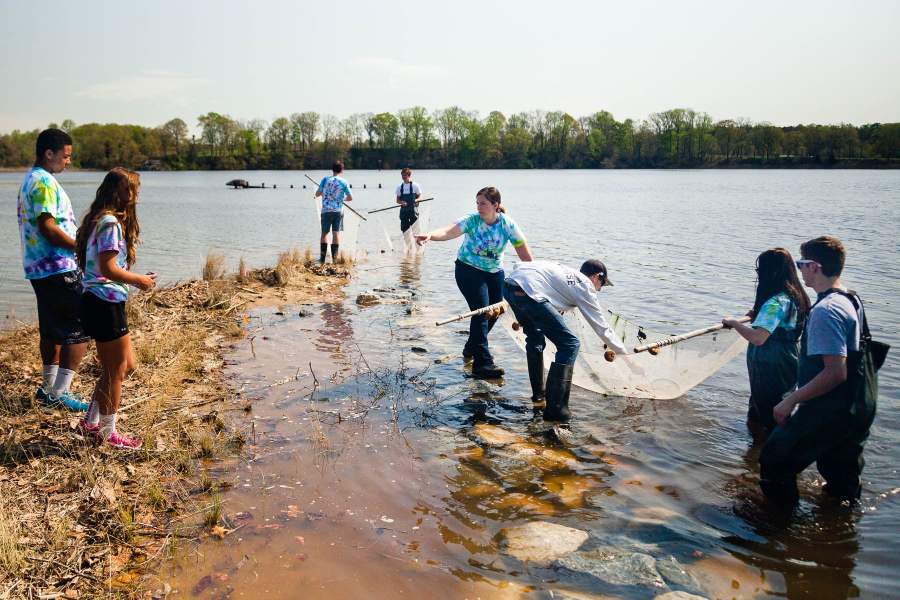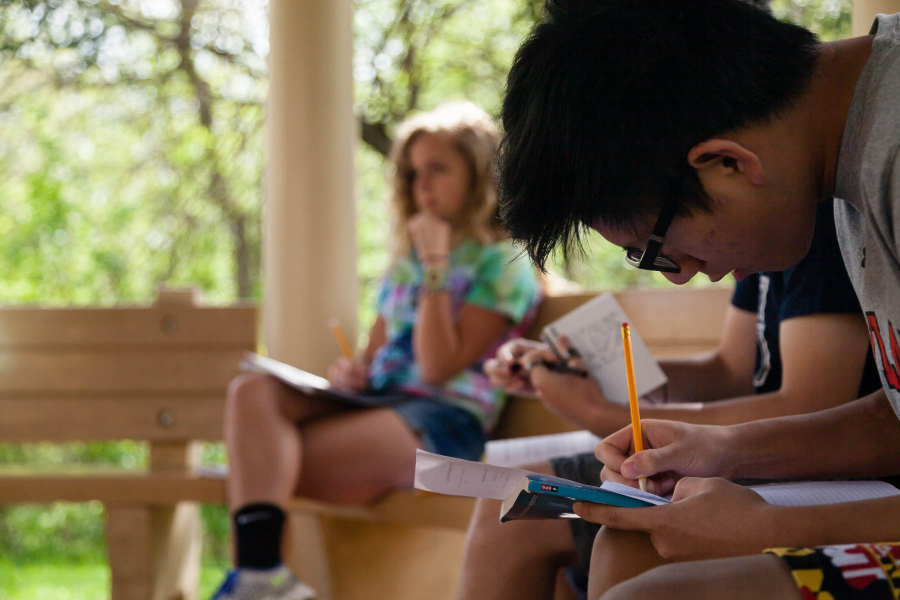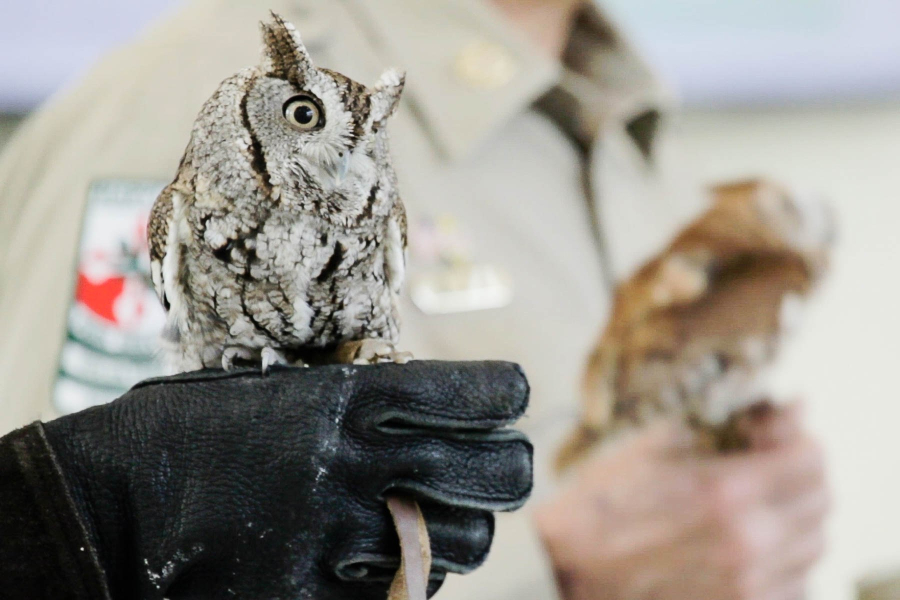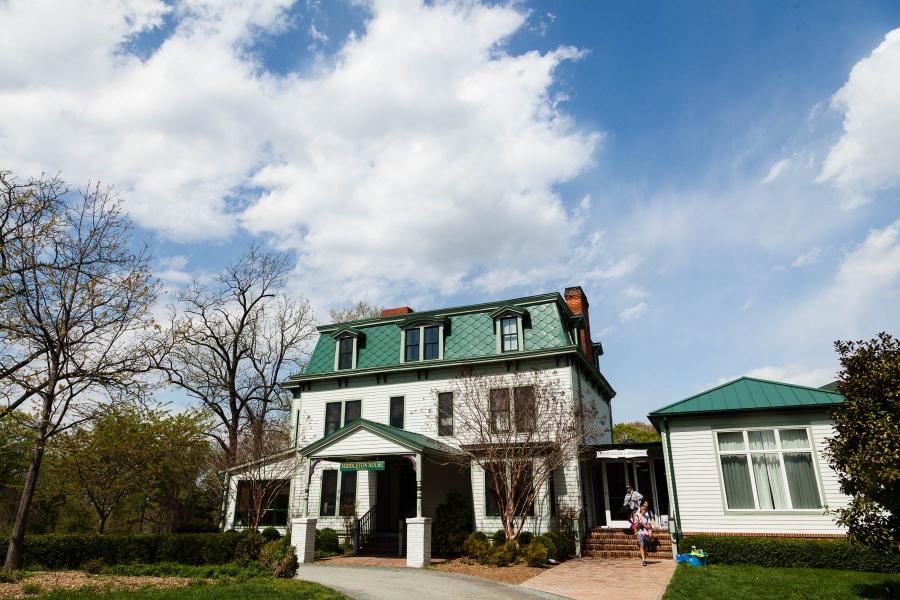Going green at the Gunston School
High school uses a student-centered philosophy to thread environmental stewardship across disciplines

On a verdant spring morning, tie-dye clad students of the Gunston School, a private high school of about 160 students in Centreville on Maryland’s Eastern Shore, gather on the dew-covered front lawn to participate in a team-building exercise. Giggling teens in conga line formations scramble around in an attempt to follow directions shouted through a megaphone by Emily Beck, the sustainability coordinator for the school. It’s Earth Day; there’s an electric energy in the air.
A one-mile access road offers the tranquility of hundreds of lush acres of farm fields, all placed under permanent conservation easement, leading up to 32 acres of campus that are nestled into the nape of the Corsica River. The rural expansiveness sets the tone for a core message that is threaded throughout everything the Gunston School does: sustainability.
Out of the 2,220 schools in Maryland, only 20 percent—or 450—of them, including the Gunston School, are certified through the Maryland Association for Environmental & Outdoor Education (MAEOE) as Green Schools. Certified schools must meet a stringent set of criteria that includes benchmarks such as school-wide environmental behavior changes, water conservation, pollution reduction, instruction on environmental issues and many more.
Certified green schools are also required to hold an annual celebration of green practices; for the Gunston School, that materializes in the form of a daylong Earth Day celebration planned and organized by the students. Instead of attending class, students participate in a morning of workshops conducted by students, faculty and outside presenters and an afternoon film session and green fair. This year’s celebration focused on the intersection of land, livestock and wildlife and offered programs such as poetry in nature; oyster restoration through the Chesapeake Environmental Center; community supported, organic and sustainable farming practices; and a number of road, campus and shoreline cleanups.

Being a green school is embedded in the core of the Gunston School’s identity. “The Gunston School has embraced being a green school; we first applied in 2011 and we reapplied this year,” said Beck. “That has really helped to inform the students, teachers, faculty and administration about what a school can be in terms of a role model in the community.”
The Gunston School’s overarching mission is to help students grow and thrive in a way that way that will prepare them for not only college, but also to be lifelong leaders. The curriculum takes a personalized approach, with instructors working closely with each student to help them develop their leadership skills and academic strengths with a special emphasis on global awareness and sustainable living. In that focus, the school is able to harness their location and pair it with lessons through their Chesapeake Bay Studies program, an integral part of the curriculum that has been in existence for more than 20 years.
Although the Bay Studies program is weaved into lesson plans throughout the year, it culminates in an annual weeklong series of experiential seminars designed to get the students in and on the Bay. By partnering with organizations such as the Chesapeake Bay Foundation, Outward Bound and the Sultana Project, students are directly exposed to and informed about the ecological problems surrounding the Bay and its watershed.

“Students learn in many different ways; we have students who are classic book learners for whom getting into the Bay helps to bring that book learning alive, and we have students who are more hands on learners and they transfer that knowledge that they got during their hands on experience back into the classroom,” said John Lewis, Headmaster of the Gunston School. “I think that if the students aren’t ever really in the Bay or immersed in the watershed, they’re sort of just abstract environmentalists—they’re not actually seeing the impacts and the dynamics of the Bay system and that goes for not just kids, but also the teachers.”
Patience and adaptation are the name of the game when it comes to taking students outdoors for lessons. “The biggest fear [for teachers] of taking students outside is that they will run wild, and it’s a downside of our current education system is that the only time that kids get to go outside is for recess. So, the times that you take them outside, their mentality is recess,” said Beck.
At the Gunston School, pairing lessons with the natural world means students have learned over the years that being outside means learning, and they remain engaged. If a distraction happens, like an eagle flying by, teachers are content with taking a moment to appreciate the sighting and even adapting their lesson to their surroundings if need be, because, like many things in life, it’s important to expect the unexpected and go with the flow.

Although outdoors learning is an ideal opportunity for both teachers and students, some challenges can come along with it. Not all schools have the ample space and natural resources that the Gunston School is fortunate enough to have access to. “There are opportunities to create teaching environments in the barest amount of space or make use of your indoor environment if it is not possible to get out of doors,” said Beck. “The natural world is all around us, it’s just changing your focus a little bit to see the learning opportunities.”
To view more photos, visit the Chesapeake Bay Program's Flickr page.

Comments
There are no comments.
Thank you!
Your comment has been received. Before it can be published, the comment will be reviewed by our team to ensure it adheres with our rules of engagement.
Back to recent stories